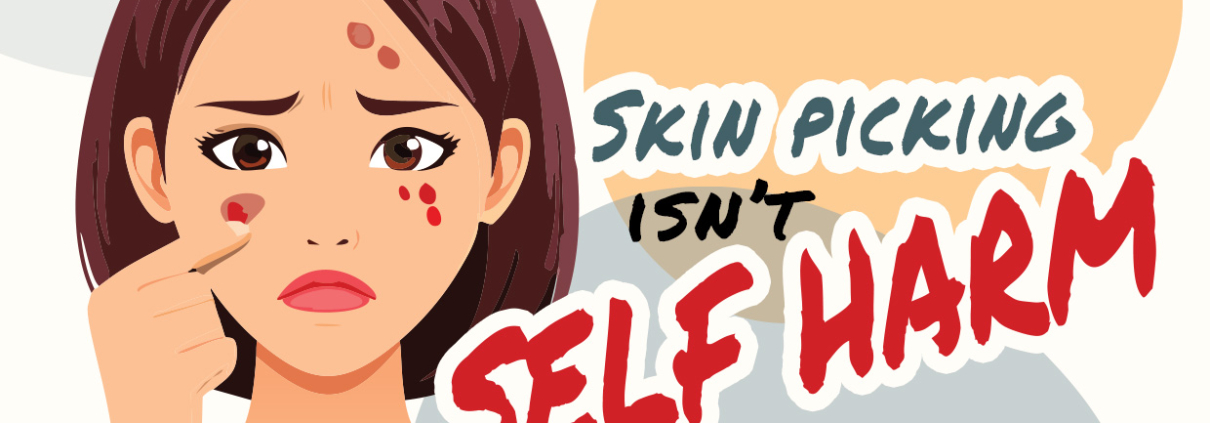Skin-picking vs. Self-Harm
Mental health struggles can take many forms, and two often-discussed behaviors are dermatillomania and self-harm. Although they may seem similar on the surface, they differ significantly in their motivations, expressions, and effects on those who experience them.
Let’s take a closer look at both conditions to better understand their complexities.
What is Dermatillomania?
Dermatillomania, or excoriation disorder, is a type of body-focused repetitive behavior. Those affected feel an overwhelming urge to pick at their skin, which can lead to visible damage, scarring, and even infections. This behavior often stems from anxiety and stress, with individuals seeking to improve their skin’s appearance, though they often cause more damage.
Characteristics of Dermatillomania:
- Compulsive Urge: Many people struggle with a strong, uncontrollable need to pick at their skin.
- Emotional Triggers: Picking can serve as a coping mechanism for anxiety, boredom, or feelings like frustration and low self-esteem.
- Consequences: The physical effects can be severe, resulting in infections and scars, which can heighten anxiety and distress.
What is Self-Harm?
Self-harm, or self-injury, involves intentionally causing harm to oneself, often through cutting or burning. This behavior is typically a way to cope with emotional pain, providing a means to express feelings that are hard to articulate.
Characteristics of Self-Harm:
- Deliberate Action: Unlike dermatillomania, self-harm is a conscious choice made to relieve emotional distress.
- Emotional Regulation: Many find that self-harming brings a sense of relief or control amidst overwhelming emotions.
- Risk of Serious Injury: This behavior can lead to significant physical harm, requiring medical attention and potentially resulting in long-term psychological issues.
Key Differences
- Motivation:
- Dermatillomania is driven by compulsive behavior without a conscious intent to cause injury.
- Self-harm is a deliberate act aimed at relieving emotional pain.
- Behavioral Patterns:
- Dermatillomania often becomes habitual and automatic.
- Self-harm is typically a planned action linked to specific emotional triggers.
- Psychological Impact:
- Both can lead to feelings of shame and guilt, but dermatillomania often relates to anxiety about appearance, while self-harm is more frequently tied to broader emotional issues like depression or trauma.
Similarities
Despite these differences, there are important overlaps:
- Underlying Mental Health Issues: Both behaviors are often connected to anxiety, depression, and other mental health conditions.
- Cycle of Shame: Individuals may experience a temporary relief followed by guilt and shame, which can perpetuate the behavior.
- Need for Support: Both conditions benefit from professional help, therapy, and coping strategies to tackle the underlying issues.
Conclusion
Understanding the nuances between dermatillomania and self-harm is crucial for providing effective support and treatment. If you or someone you know is struggling with either of these conditions, reaching out for professional help is vital. Early intervention can lead to better outcomes, and fostering awareness and empathy is essential in addressing these mental health challenges. Seeking care is a courageous step toward healing.

 ownmyskin.com
ownmyskin.com







Leave a Reply
Want to join the discussion?Feel free to contribute!